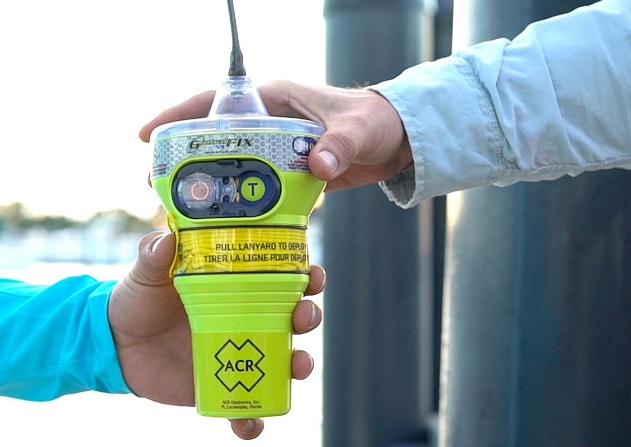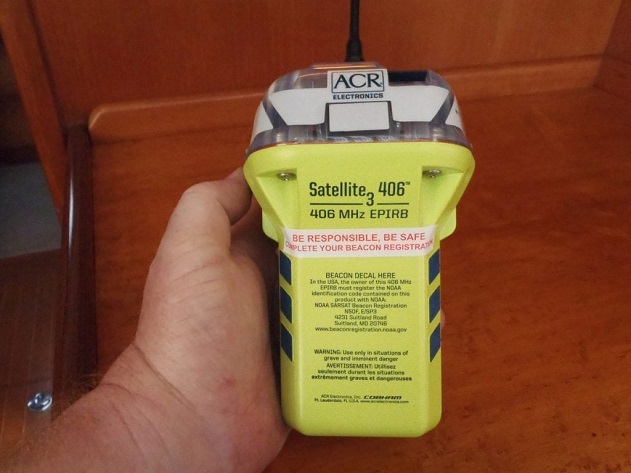The Whats and Hows of Portable Personal EPIRB Device
Getting lost during outdoor activities is no fun, and can even be dangerous. Not knowing your way around can quickly lead to dehydration, heat exhaustion, and other health problems. Add inclement weather or treacherous terrain to the mix, and you have a recipe for disaster.
But thanks to the advances in technology in recent years, we don’t have to despair. Now, there are numerous off-road accessories that can help us find our way, even in the most remote and inhospitable locations. One such device is the portable personal EPIRB or Emergency Position-Indicating Radio Beacon.
What Is an EPIRB Device?

An EPIRB is a portable, handheld radio beacon that emits a distress signal when activated. The signal is picked up by orbiting satellites, which then relay the information to search and rescue authorities. This allows them to pinpoint the location of the individual in need of assistance, even if they are in a remote or difficult-to-reach area.
Generally speaking, most compact EPIRBs on the market today also come equipped with GPS, so that the distress signal includes the exact coordinates of the individual’s location. This is a valuable feature, as it can help rescue teams locate the person more quickly and efficiently.
The frequency of the EPIRB signal is in the UHF band and is monitored by a number of international agencies, including the COSPAS-SARSAT satellite system. This system consists of a network of satellites that are constantly orbiting the earth and are specifically designed to pick up distress signals from devices like EPIRBs.
In any case, when an EPIRB distress signal is detected, the relevant search and rescue authorities are notified and a rescue operation is initiated. Depending on the severity of the situation, this may involve anything from sending out a search party to dispatching a helicopter or other aircraft.
In terms of sea-based emergencies, if your vessel is going more than two nautical miles offshore, Australian rules mandate that you carry an EPIRB device, and the Australian Maritime Safety Authority (AMSA) advises all boaters to carry a registered EPIRB aboard their vessel.
When you’re out in the ocean, things change quickly, and getting help can be more difficult than on land. So when fear sets in, and time is your enemy, having an EPIRB on board will give you a peace of mind knowing that help is on its way at the flip of a switch.
Make Sure You Register Your Beacon

All EPIRBs devices must be registered with the Aussie government, regardless of where you live. This is because when the device is activated, it transmits a signal that includes your registered contact information. This allows rescue workers to get in touch with your emergency contacts to let them know what is happening and to provide updates on the situation.
It also helps authorities confirm that the EPIRB signal is coming from a genuine emergency situation and not from a false alarm. Registering your device is quick and easy to do online, and it’s important to make sure that your contact information is kept up to date.
Registration should be renewed at least every two years. Most registrations may be quickly modified online, making it simple to add a float plan or extra trip details to your registration at any time. Consider your EPIRB registration to be your own personal component of your rescue. The more information you offer and the more frequently you update your registration, the more information the individuals going to save you will have to accelerate your own rescue.
What Are the Two Types of EPIRBs?
Based on how they are activated, EPIRBs can be classified into two types: manual and automatic. Both models transmit the same type of signal, with all the same information.
Manual EPIRBs
These are the most common type of EPIRBs out there. As the name suggests, they require the user to manually activate the device when they need to. To do this, you simply flip a switch or press a button.
Many manual EPIRBs also have a water-activated feature that will automatically turn on the device if it is submerged in water. This is a valuable safety feature, as it means that even if you are unconscious or otherwise unable to activate the device yourself, it will still send out a distress signal.
Automatic EPIRBs
These devices are also known as AEPIRBs or self-activating EPIRBs. As the name suggests, they don’t require the user to do anything to activate them. Instead, they are designed to automatically turn on and start sending a signal when they detect certain conditions that indicate that the user is in distress.
For example, some AEPIRBs will activate if they sense that there’s been a sudden, significant change in the user’s speed or direction (as might happen if they fell overboard from a boat). Others may be equipped with sensors that can detect changes in body temperature or heart rate, which can indicate that the user is suffering from hypothermia or a heart attack.



